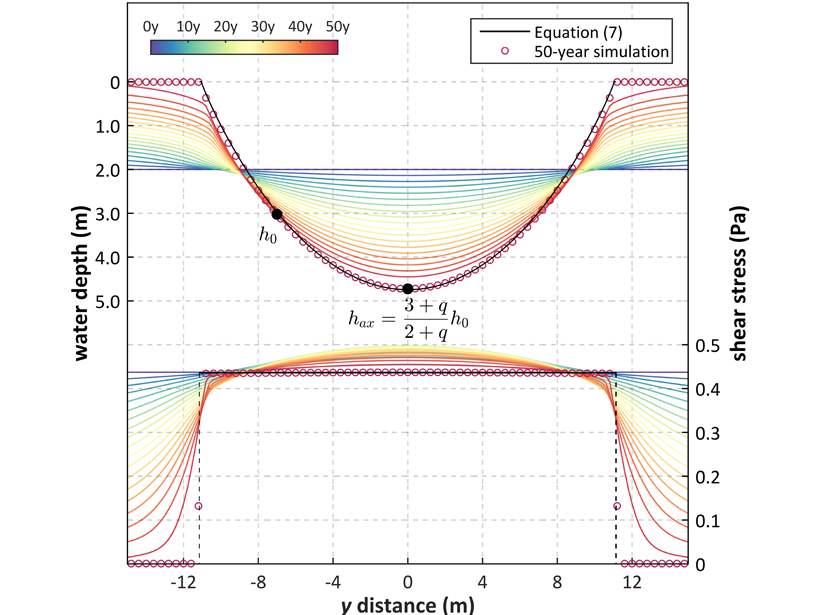Source: Geophysical Research Letters
Starting with the pioneering work by Leopold and Maddock in 1950s, it has been long empirically observed that channel bankfull width, mean depth, and mean velocity can be related to the landscape-forming flow rate Q via a general power-law relation ∝ Qζ, where the exponent ζ has exhibited wide variations across different watersheds. The problem of developing the power-law relationship from the first-principles and understanding what controls the variation of ζ has attracted the interest of many researchers in the field of fluvial geomorphology. However, the underlying physical principles behind had not yet been satisfactorily explained.
Xu et al. [2020] is the first study to analytically describe landscape channel cross-section at equilibrium, confirming the power-law dependence. Furthermore, it attributes the variations in ζ to the conditions of frictional resistance, potentially offering the capacity to predict equilibrium channels. This explanation of empirically deduced laws therefore can provide a range of valuable contributions not only to basic science but also to practical tasks at hand: from the utility of improving discharge monitoring capability on yet ungagged rivers, to estimating flood risks, and to understanding aquatic ecosystem conditions.
Citation: Xu, F., Coco, G., Zhou, Z., Townend, I., Guo, L., & He, Q. [2020]. A universal form of power law relationships for river and stream channels. Geophysical Research Letters, 47, e2020GL090493. https://doi.org/10.1029/2020GL090493
—Valeriy Ivanov, Editor, Geophysical Research Letters
Text © 2020. The authors. CC BY-NC-ND 3.0
Except where otherwise noted, images are subject to copyright. Any reuse without express permission from the copyright owner is prohibited.

